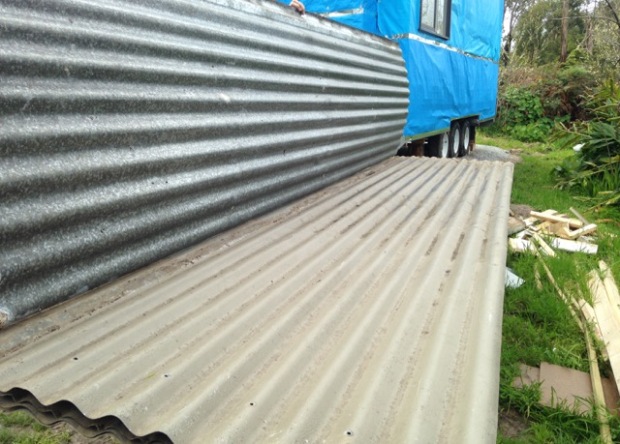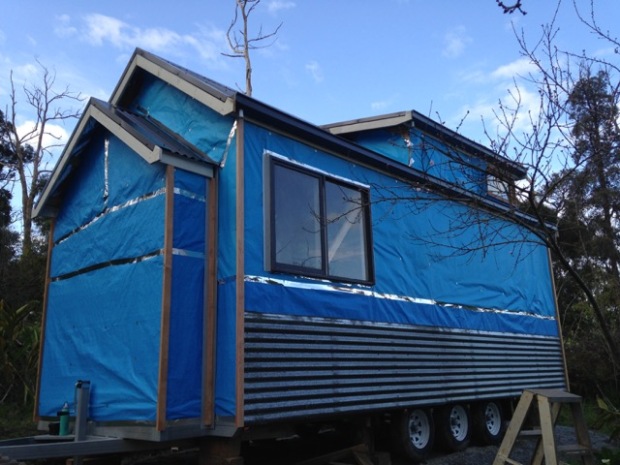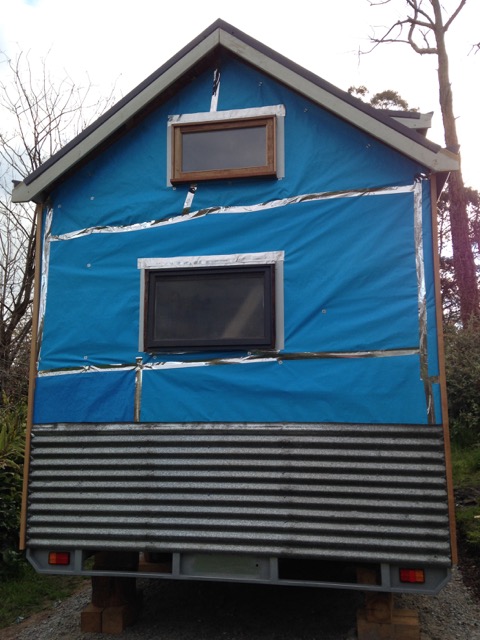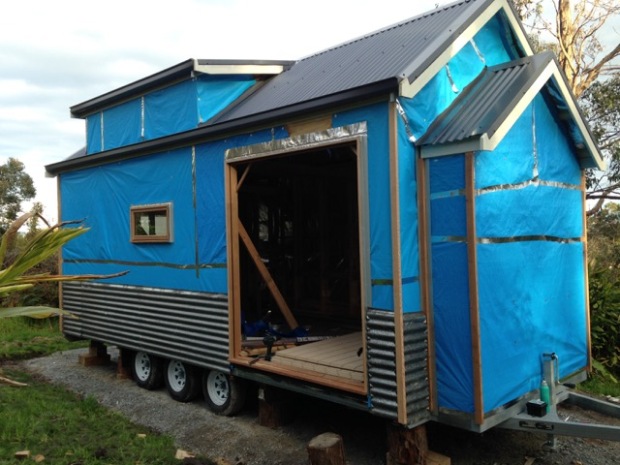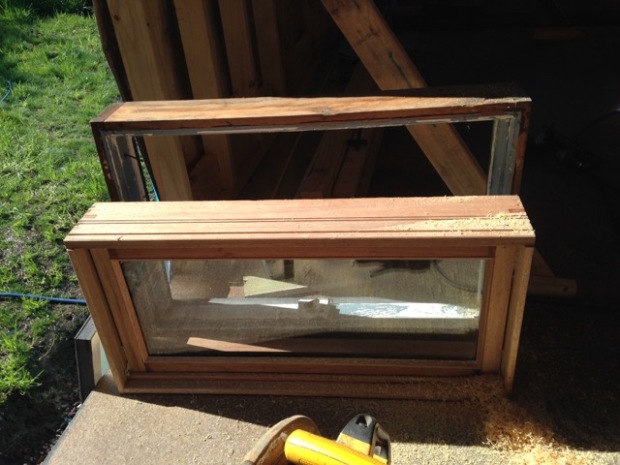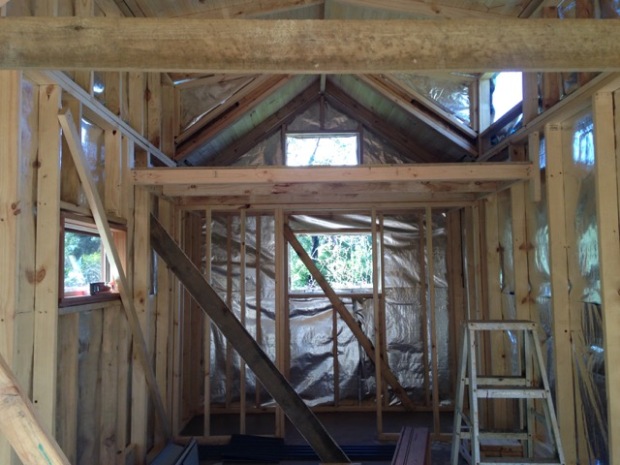With my lovely tin skirt on, I chose to finish the cladding with profiled ply panels that will soon be painted. This part required a bit of investigating, to find something with the look I wanted that was as light as possible. With some profiled cladding coming in at close to 20kgs per square metre, I was pretty chuffed to find the rough sawn timber Shadowclad for 6.6kgs/m2 . The panels are light weight, durable and a lot quicker to install than individual boards, plus I had the choice to purchase them pre-primed and ready to paint. The panels come in 1200mm widths – a fairly standard width for this type of cladding, I take it. We’d had the discussion about cladding options at the start and clever Tom had the forethought to plan the framing around this – my studs were set (for the most part) up to ensure we had something to attach both edge of the panels to. Genius! Certainly not something I could’ve thought of and planned for way back in the framing days.

If he wasn’t so good at his job I’d have words with Tom about the fact that he doesn’t take any pictures of me doing actual work. Giving us apprentices bad reps, I swear.


I bought 10 panels at 2400 high x 1200 wide ($107.50 each) and another 6 at 2700 x 1200 ($118.20 each) and we should have enough to clad the whole thing ($1784). There were quite a number of small offcuts left over that I will try to use for other things inside the house, the vertical profile of the lines and overlap of the panels made them slightly trickier to incorporate. Lots of joins aren’t exactly ideal for water proofing purposes and probably more mucking around than it was worth.
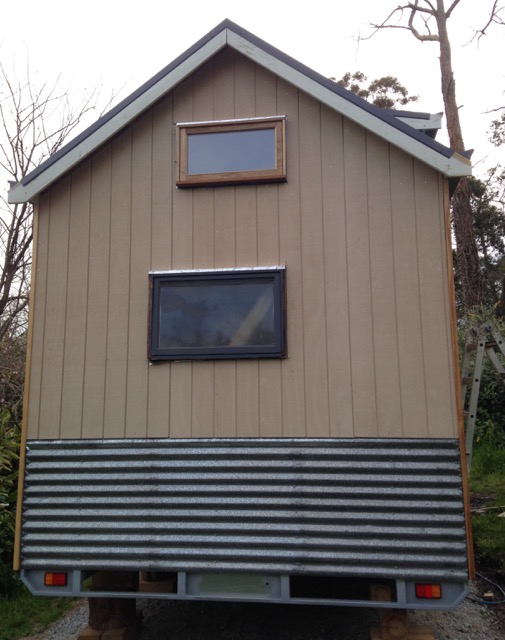
The edges aren’t totally straight where the cladding meets the tin but that’s going to be covered up with another piece of timber to tie it all together, and the top will be covered by the eaves. Takes some of the pressure off to get it all perfect! (Although more accuracy is required in other places – adjustments can’t be made board by board if things aren’t quite square.) Two days spent cladding and only the dormers left to go – not exactly sure how we’re going to get up there to do it, but it’ll happen. Doors are lined up to be hung next and then…it might be that my tiny will be at the long awaited, much fabled LOCK UP!

